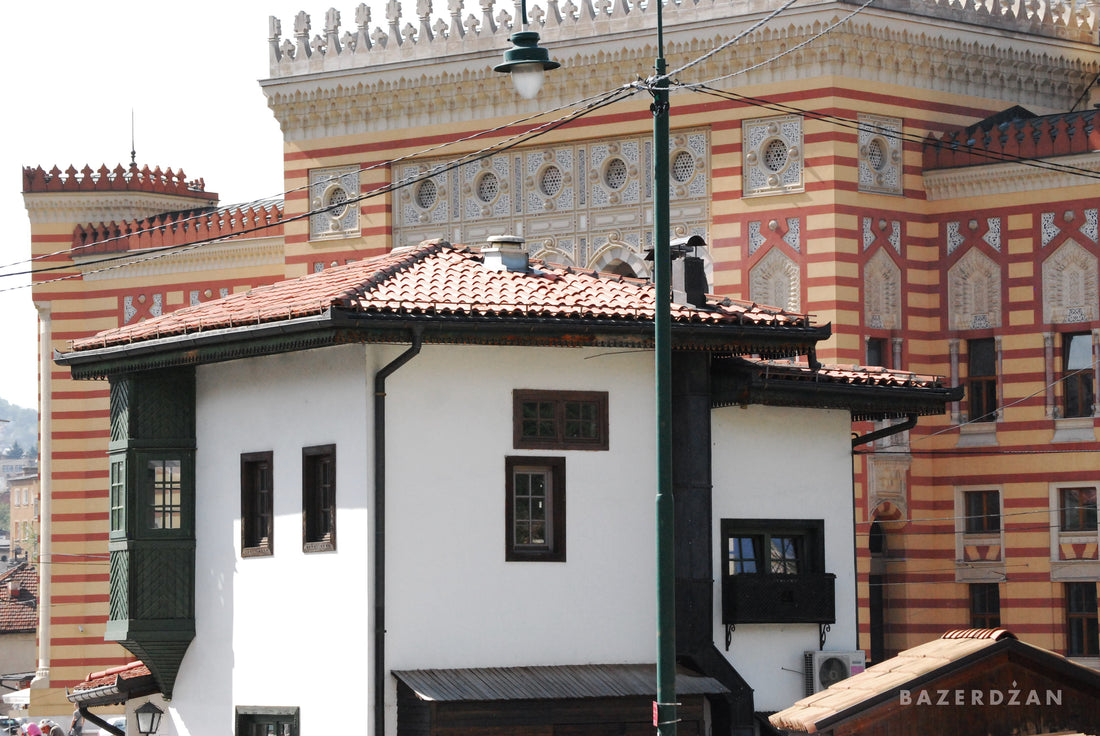
Sarajevo stories, part 1
Share
There’s a lot you can say about a city with a rich and diverse history as Sarajevo (and we will, in time), yet there are few universal truths that stood the test of time, just as the city did through its 500-something-year history.
This is not your typical, run-of-the-mill story. This is a story about Sarajevo as we see it: a city full of beauty and fighting spirit, a charmer that no one can resist. This is a story about Sarajevo’s sense of belonging and spite, the defiant essence that we at Bazerdžan try to keep alive in our own little way.
While the area where the city currently stands was populated since the Stone Age (Neolithic, more precisely, for all you archeologists out there), Sarajevo as we know it is the result of increasing Ottoman settlements in the Miljacka’s riverbed in the 1450s. Upon its conquest of the region, the Ottoman Empire founded Saraybosna (“the palace of Bosnia”), the official name that stuck during the 400-year Ottoman rule (fun fact: Saraybosna is still commonly used in the modern Turkish language). The city grew on a basis of a frequent trade route, centered around a Turkish-style marketplace and distinct shops (much like yours truly), leveling up the infrastructure along the way.
An act of resistance
If you’re wondering why Sarajevo and not Saraybosna, especially since the namegivers still prefer the original, that just might be one of the first examples of this city’s defiant nature. Sarajevo is a slavicized word of saray, and seeing as Slavic people inhabited the area since the 7th century, here at Bazerdžan, we like to think that the first of Sarajevans (even if they weren’t really Sarajevans by name) rejected the full official name and instead made their own version.
Etymology aside, one tangible evidence of the defiance in the “man versus the system” style is the Inat kuća (House of Spite). When the Austrian-Hungarian monarchy “inherited” the city in the late 19th century, plans for a grand city hall were put into motion.

However, the prime location chosen for the construction of where the Vijećnica (City Hall) stands today - the end or the beginning of the Old Town, depending on the direction you approach it, was occupied. The owner of the house, a bonafide “little man” compared to the empire that was in power back then, refused to move. He demanded a pouch of ducats (gold/silver coins) as a compensation for his trouble, as well as his house to be moved brick by brick, stone by stone across to the other side of the river Miljacka.

And so it was, earning the name Inat kuća in the process due to its owner’s stubbornness and spite. Fast forward to today and the old part of the town still stands strong. Inat kuća is still there (now a restaurant mainly serving traditional Bosnian cuisine), directly facing the recently restored City Hall, as it wants to say “I’m still here” intact, after all this time. Intact as much as the term’s broad definition allows it, considering three major wars happened in the last 100+ years and the subsequent restoration efforts.

Mondo blando
Inat kuća is just one of the many examples how staying true to yourself is deeply ingrained in Sarajevo (we’ll have plenty more, don’t worry). You can easily draw a parallel with modern fashion. Spending money on fashion, accessories, and all those little things is ritual-like habit for most women. In particular, the fashion lover experiences buying new clothing as a fun sport. Fashion is a statement and for some of us out there, it’s also a form of art. More so, it’s an investment where you make sure you end up with well-made garments you like. Yet, it doesn’t necessarily translate to being shop-savvy.

Money is always a touchy subject and far be it you’ll hear us giving pro advice - heck, we immediately go for things we like all the time. There are really no rules when it comes to what you’ll find at Bazerdžan so we’re really not the ones to promote smart spending. Instead, we’ll leave you with this little gem:
how you spend your money is how you affect what exists in the world today.
While the spending habits vary from person to person, there seem to be certain rules of thumb that can be found across the board. People are consuming less the clothing itself and focusing on the corporate brand or logo that comes with the territory. This all successfully adds to the growing impersonal and corporate look and feel that’s created by customers’ wallets.

We see it at almost every corner of our city. You can hardly buy a true, genuine souvenir or a little something-something without it coming from the virtually same template easily found elsewhere. If you want something fresh and unique with a high sense of character etched into it, you’re going to have a hard time finding it. And you shouldn’t. Nobody should, especially with a wealth of diverse cultures and traditions both Sarajevo and Bosnia and Herzegovina have to offer.

A spark of life
We like to think of Bazerdžan as a bastion of all-things local and traditional, from the very material we buy from the honest and hard-working people across the country to the talented designers, artists, and organizations we so gladly work with. For us, the name of the game is to be yourself to the fullest. We try to achieve that by bringing the best our country has to offer, either by working directly to create opportunities or through our own brand. We try to honor our rich cultural heritage by preserving the traditional through a new modern feel, breathing fresh life into it to keep up with these fast-changing times. It’s our way of saying “no” to the everyday, same old stuff that surrounds us and we’re sticking to it.
For Sarajevo, with love.
Bazerdžan team
